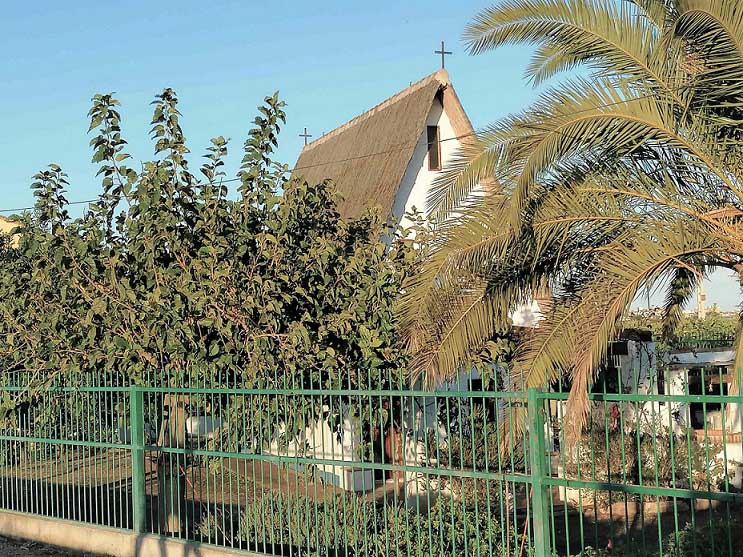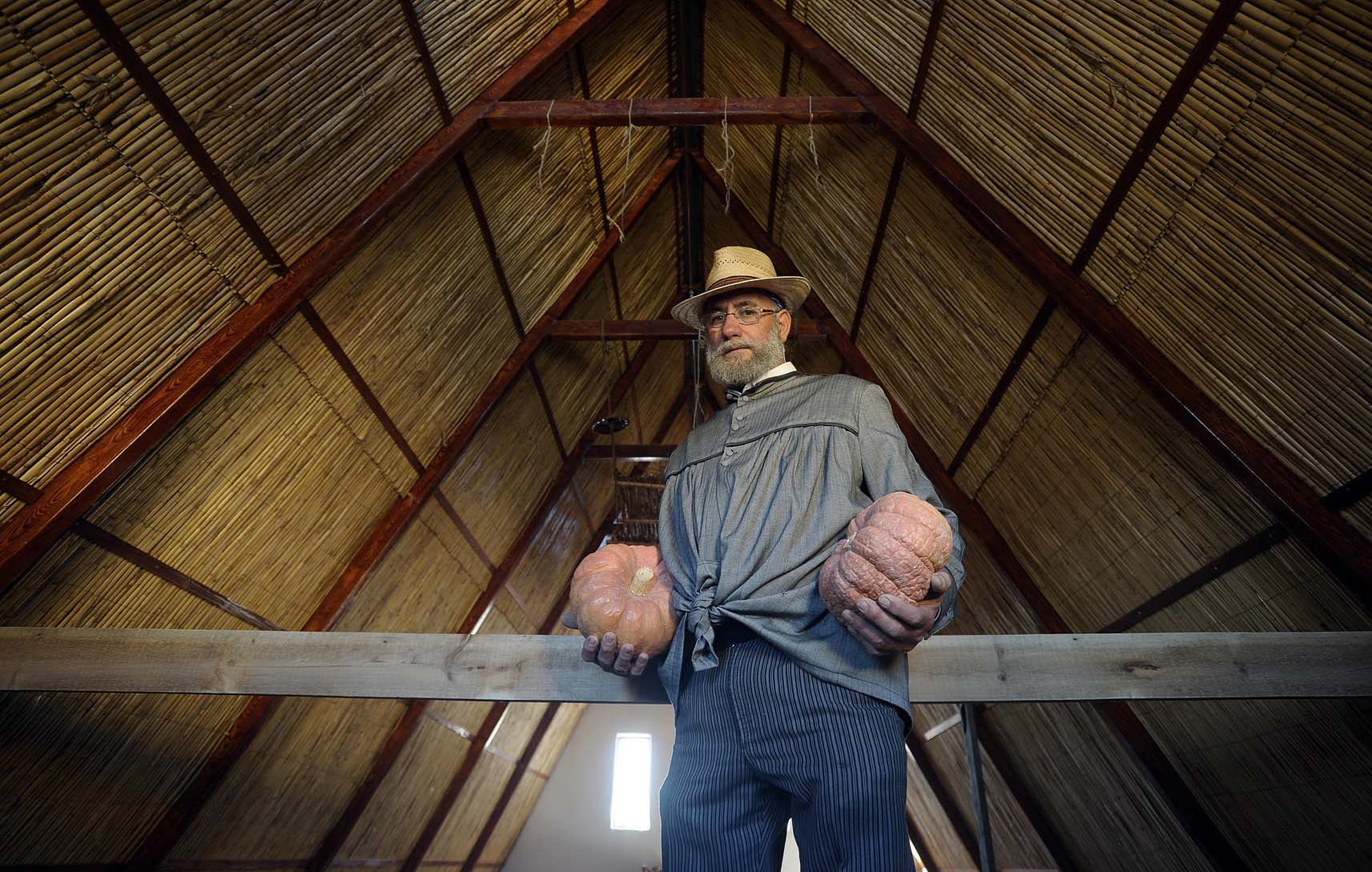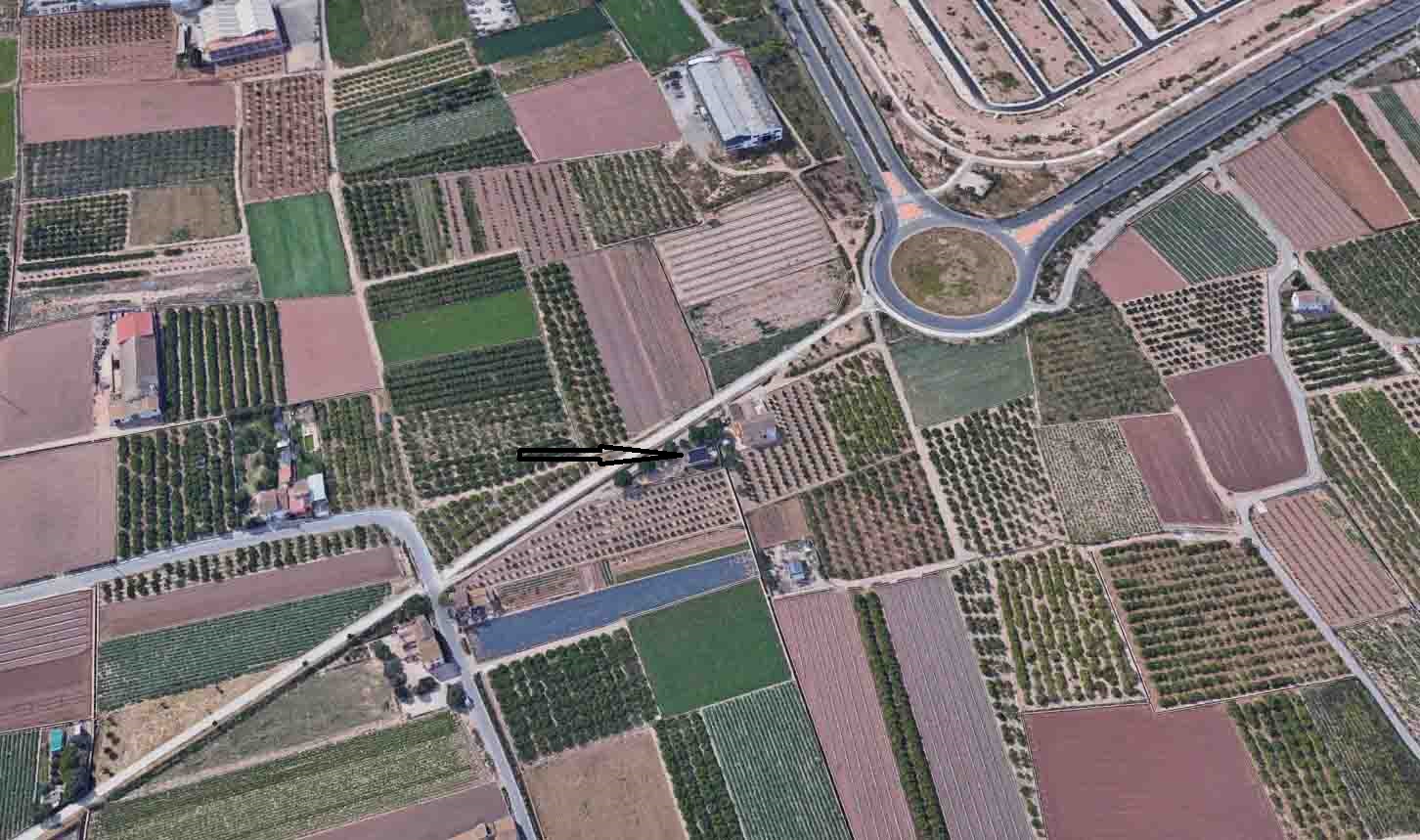
It is located in the north of the town of Meliana but in the municipality of Foios, on the edge of the cycle path known as "via Churra". It can be reached by the road to the sea in Foios, after crossing this cycle path on the left, or by the first roundabout on the CV-300 between Foios and Albalat dels Sorells, heading south along this cycle path.
Late 20th century.
It is a modern Barraca, form the end of the 20th century, it was built by Toni Montoliu, owner of a traditional huerta restaurant and located a few hundred metres from the northern part of the town centre of Meliana. His aim has been to have an example of this traditional architecture as a cultural complement to his catering service and it is occasionally used as a point of explanation of the life, work, tools, etc. of the Valencian huerta.
The barraca is located in a completely area of vegetable garden in the north of the city centre of Meliana, but in the limit of Foios. There are some other farmsteads around it, but they are basically orange groves and vegetable fields. It is rectangular in shape and has the morphology of the old barracas in all aspects and dimensions. Its construction has been done with interest for this authenticity although part of the materials used are modern. The main facade, just like the hollows, respects the distribution and measurements also of the old barracas. Moreover, its carpentry is made of wood. In front of the main door there is a porch. The interior of the platform space has also been respected. The roof is supported by a wooden cabiram reiforced with iron and covered with reeds. It is externally plastered and whitewashed. On the outside, inside a small plot surrounded by a fence, there are some typical elements of farmhouses, such as a oven, a well or some agricultural machinery. It is one of the best examples of a neo-barraca, together with the municipal one in Alboraya and some of those in El Palmar.
- Bé Immoble de Rellevància Local (BRL-BRR), per defecte: “les barraques tradicionals de la comarca de l’Horta de València”.
Disposició addicional quinta de la Llei 5/2007, de 9 de febrer, de modificació de la Llei 4/1998, de 11 de juny, del Patrimoni Cultural Valencià. - Bé Immoble de Rellevància Local (BRL-BRR), per defecte: “les barraques tradicionals pròpies de les hortes valencianes”. Article 4 de la Llei 9/2017, de 7 d’abril, de modificació de la Llei 4/1998, del Patrimoni Cultural Valencià.
DEL REY, M. (2010): Arquitectura Rural Valenciana, Barcelona: Galerada (1ª edició: València: Direcció General de Patrimoni Artístic, 1996).
GÓMEZ MATAIX, G. (2016): “De la esfera simbólica al catálogo arquitectónico: Atlas visual de la barraca de la Huerta de Valencia”, Revista Valenciana d’Etnologia, n. 8, pp. 115-152.
GARCÍA ESPARZA, J. A. (2008): “La barraca valenciana, procesos de transformación”, Revista Valenciana d’Etnologia, n. 3, pp. 145-159.
CRUZ OROZCO, J. (2003): “Las viviendas de cubierta vegetal en el territorio valenciano: el caso de la barraca”, Revista El Pajar: Cuaderno de Etnografía Canaria, n. 14, pp. 111-116.
SANCHIS GUARNER, M. (1957): Les barraques valencianes, Barcelona, Ed. Barcino (reedició: València, Institució Alfons el Magnànim, 1999).
ALMELA VIVES, F. (1960): La vivienda rural valenciana, Valencia, La Semana Gráfica.
CASAS TORRES, J. M. (1944): La vivienda y los núcleos rurales de la huerta de Valencia, València, Diputació Provincial de València.
RUIZ RUBIO, J. V. (1999): Construint una barraca valenciana, València, Ajuntament d’Alboraia-Col·legi d’Aparelladors i Arquitectes Tècnics de València-Col·legi d’Arquitectes de la Comunitat Valenciana.
GOSÁLVEZ, V.(1915): Estudio constructivo de la Barraca de la Vega Valenciana, Tema de investigación presentado al tribunal de oposiciones. Manuscrito. Biblioteca del COACV. València (Facsimil de: “La Barraca Valenciana”, COACV-Colegio Oficial de Arquitectos de la Comunidad Valenciana, 1998).
Photos: E. Guinot, Google Earth, web La Barraca de Toni Montoliu

















